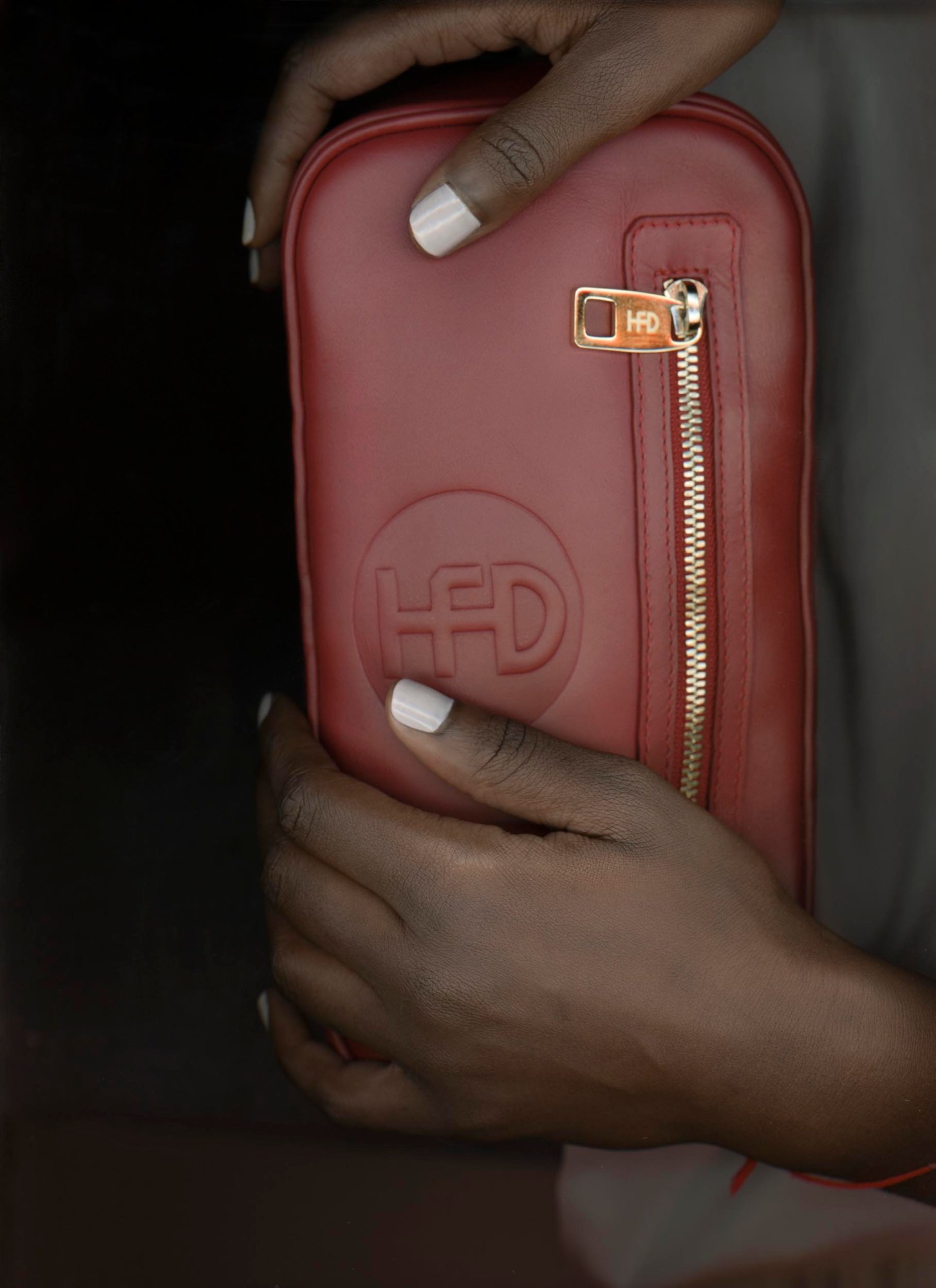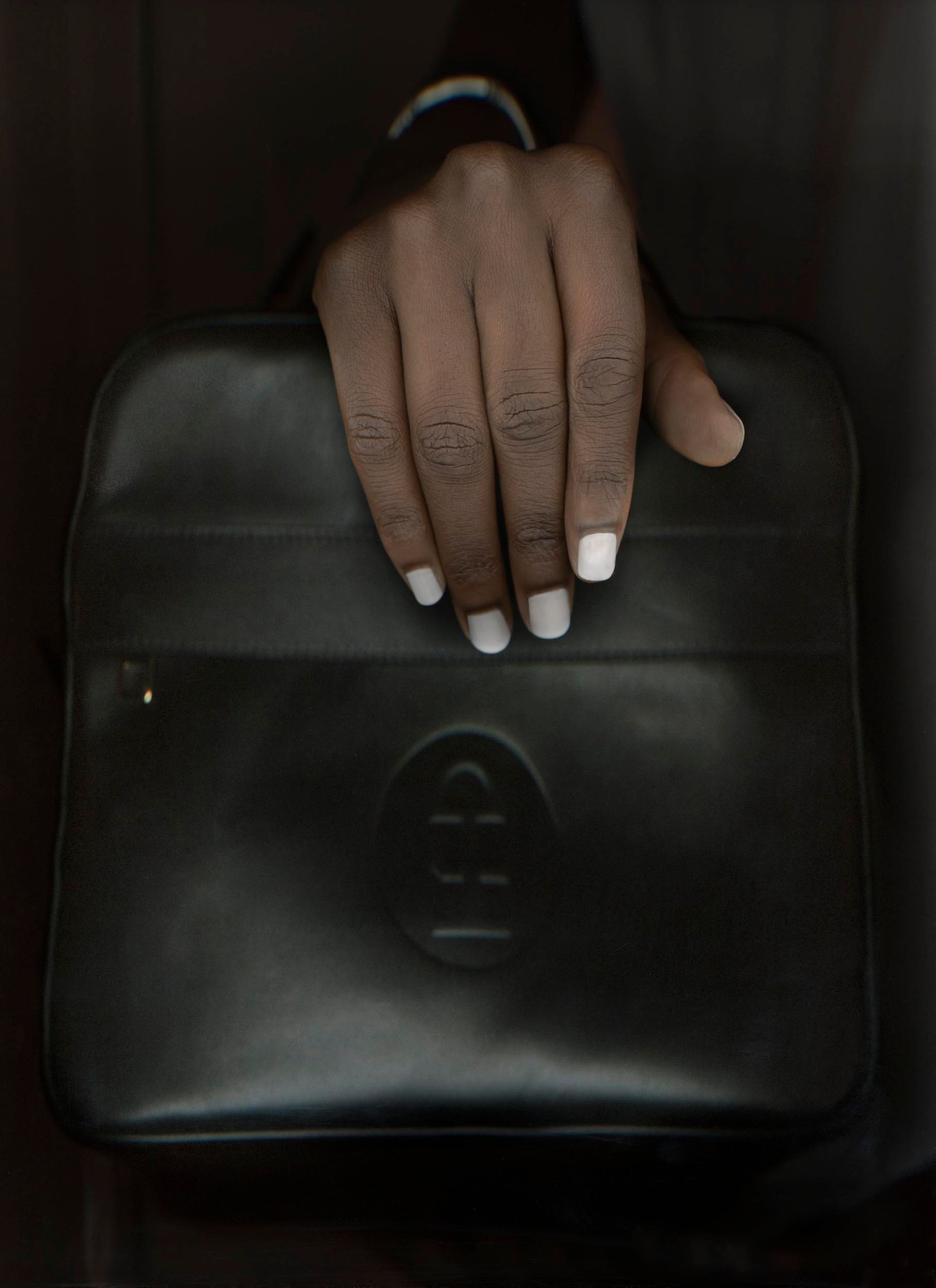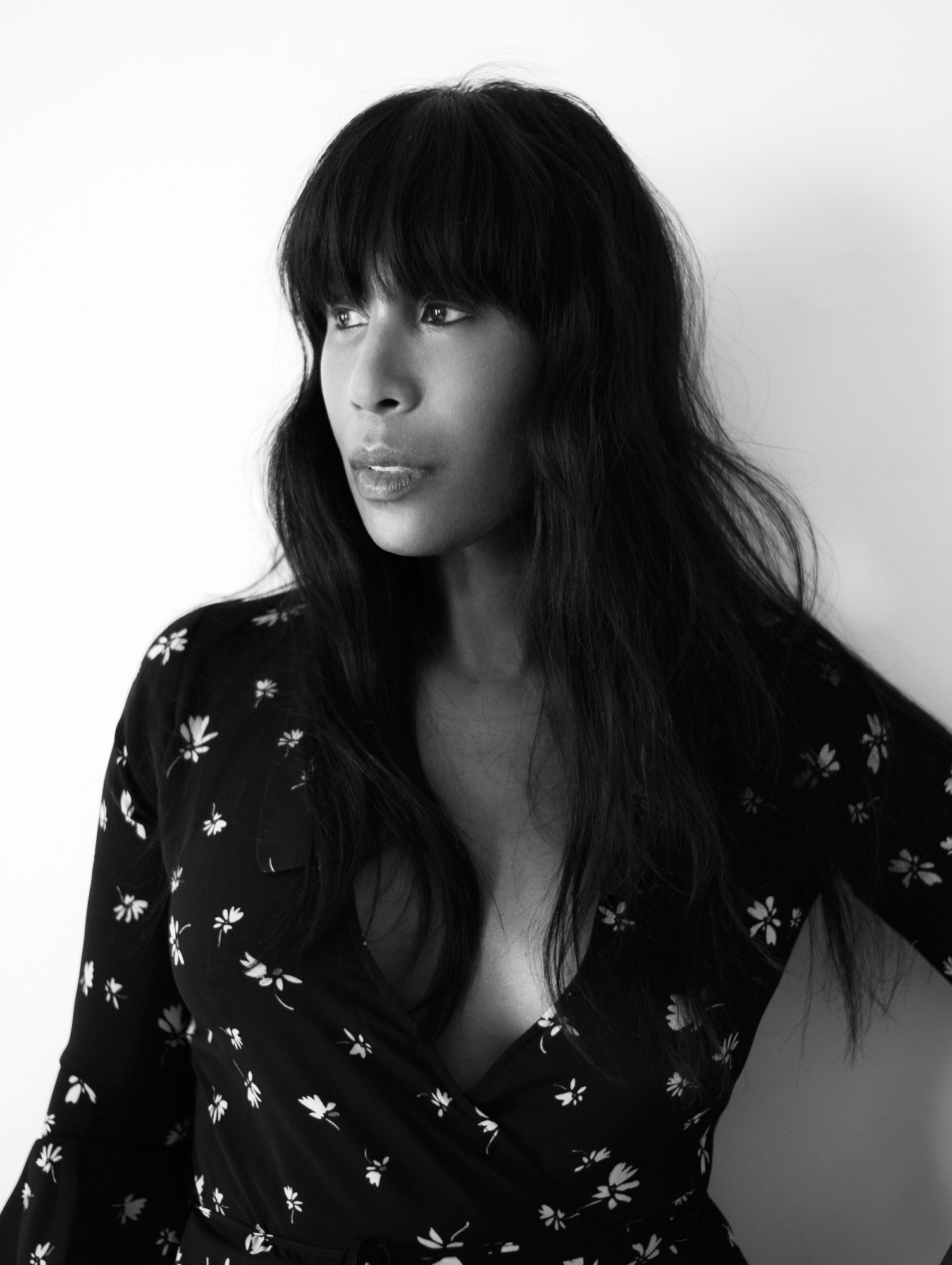If you’ve ever witnessed one of Honey Dijon’s sets, you’ll know that she adopts a borderless approach to DJing. Her emotionally earnest mixing has earned her fans from Berghain to Burberry, the latter being a testament to her reputation as one of fashion’s favourite DJs. But that genre-blurring ethos extends beyond her musical career: back in May, it was announced that Dijon would be collaborating with Comme des Garçons on a new brand, Honey Fucking Dijon.
“Jean-Michel Basquiat was not only a painter, he was also a DJ and a musician. Back then, no one ever questioned how people moved between different creative disciplines, it was just assumed that that’s what you did,” Dijon tells i-D. “If you were a creative, you were a creative.” In the same polymathic spirit, Dijon recently celebrated the launch of a capsule of t-shirts and DJ accessories at Dover Street Market London and DSM Los Angeles, with DSM New York to follow on November 2nd.
The collection isn’t just worth celebrating for the creative verve it demonstrates; it’s also an exhibition of the Berlin-based DJ’s triumph in the face of structural adversity, turning the marginalisation she’s experienced into uncompromising strength. “I refuse to think in terms of borders or limitations. When the world tells you no from every angle, you think ‘Fuck it! I’m just going to do what I want’,” she says. “People are always afraid of being told no, of not being accepted, and I think the question you have to ask yourself is: be accepted by whom?”
To mark Honey Fucking Dijon’s launch, we caught up with Dijon on how the collection developed from a friendship with Adrian Joffe, growing up in Chicago’s black gay scene, and why we need more sex on our dancefloors.

So what were your first interactions with fashion?
Fashion’s always been a part of my life in some form ever since I was a kid. My father was very much into dressing and would take clothes to my uncle to have fitted—he was a tailor on the South Side of Chicago. When I went over there, he would always have copies of GQ and Vogue lying around, and that was my introduction to this world. It was mesmerising for me, I was like Alice stepping through the looking glass. And also, I was always around Jet magazine, with Grace Jones on the cover, and then there was the Ebony Fashion Fair, and just going to church on Sundays… Black people have always been especially concerned about their appearance; it’s a way of reclaiming power and feeling beautiful about yourself when the world doesn’t tell you that you are. That was my introduction to fashion: being around my uncle’s magazine, but also just being around black people.
Often when people experience oppression, fashion can serve as a means to express an identity that you’re otherwise forbidden to perform.
Exactly, it’s a case of showing yourself respect when the world doesn’t. Also, when I first started clubbing, clothing was a way of communicating what subculture you were part of, what music you listened to, what clubs you went to: what you were aligned with culturally. Growing up in the then-burgeoning house music culture, in Chicago’s black gay scene, there was a sense of fashion being used as a means of actualising an identity you couldn’t elsewhere. Today, because house music has become so commercial, most people associate it with one particular sound. When I was experiencing house music, however, it was multi-genre. We were influenced by acid house being made by inner-city black kids, by what was happening in New York with the New Wave and No Wave sounds, and also early electro-pop music that was coming from the UK.
There were all of these influences from pop music—Prince, early Madonna records, early punk records by The Clash. And disco! All of these elements fused and informed how people dressed. You would have these kids stealing clothes by European fashion designers like Gaultier, Gianni Versace and Gianfranco Ferré, wearing them to the club and sweating them off. A pair of riding boots, some jodhpurs and a Versace sweater meant you were ‘house’. As did having a mohawk and wearing an oversized blazer with safety pins on it and a bodysuit, which was a continuation of the disco look.
Then there were my trips to Wax Trax!, a record store in Chicago where I bought punk records. That’s where I discovered NME, The Face and i-D… All of these things were part of my schooling.

It seems like you developed a very eclectic pool of references when it comes to fashion, which is something that’s mirrored in your DJing style.
That’s also because I’ve been in so many different environments, I’ve been in black gay spaces, white gay spaces, family picnics, underground parties, basement parties, big New York rooms, big English rooms: I’ve been in every type of dancing space that you can imagine. And that informs how I present music as a DJ.
How has that informed your approach to this collection?
Well, I don’t really see any fashion that’s really connected to culture now, there’s no sense of rebellion any more, even with the movements for trans visibility, #MeToo, or Black Lives Matter. Before, in the case of the women’s movement, for example, women dressed more freely, demonstrating that they weren’t afraid of their sexuality. And then in the gay movement of the early 90s, people expressed themselves through shorts, combat boots and Caesar haircuts. There was always a visual language there, a sense of clothing having some sense of cultural currency. Now, I feel it’s just about making product, it’s about consuming things and displaying status.
With Honey Fucking Dijon, I wanted to create things that had cultural currency and a relationship to what I do as a DJ. Everything I made, the bags, for example, had to have a purpose. It had to be multifunctional too—the USB case could function as a wallet, and the record case could function as a tote, or a small travel bag, the headphone case could work as a simple clutch if you’re going out at night. It’s agender, anybody can use or wear it. I just wanted it to be something that looks good, that’s fun, and that people can actually use and not have it sit around in their room like a museum piece.
What did the collaboration with Comme des Garcons allow you to do that you couldn’t otherwise?
I also wanted to bridge music, fashion and art, creating and collaborating with queer, brown and women designers. It was a way to bring my culture into fashion, which I feel is lacking. We still have white cis-gendered, heteronormative people deciding on what trans looks like, who gets to be in the ad, who gets to be on the runway. But trans people, queer people and black people are all creating things for themselves: we need to be in the creative roles and behind the scenes, rather than just being chosen to be in someone’s campaign. And even when we do creates spaces for ourselves, they’re colonised and commercialised.
But the great thing about working with Adrian Joffe and Comme des Garçons was that there was a real sense of mutual trust, which so many of our conversations centre on. I often thank him for giving me this opportunity, and he thanks me for trusting him enough to bring my culture to the project, and for having faith that it wouldn’t be used in an exploitative way. He’s letting me have my own voice within the umbrella of Dover Street Market, which is quite unusual and remarkable.

I also wanted to touch upon the theme of borderlessness with regard to your work. You’re quite a polymath, working as a DJ, a designer, a social figure…
Which is hilarious to me! A couple of years ago, The Gentlewoman did a whole thing on social mobility and my ability to effortlessly traverse these different social groups and environments, from the underground to Berghain, festivals to fashion parties. I think it comes from the fact that when you’re a trans person of colour, you’re never part of anything. You have to learn how to have dialogues with different types of people in order to communicate who you are.
I’ve always felt like a misfit, as I can’t align myself with anything. There’s so much transphobia and homophobia in black culture, so much transphobia and racism in gay culture, and a lack of diversity and visibility of women, people of colour and trans people in fashion, so I’ve never felt like a part of any of the spaces I’ve been in.
The fact that I’m at the intersection of race, gender and sexual orientation is pretty profound, and I’ve had to find my own place within all of that. I think I was able to move in these worlds as I realised that, as there was no reflection of myself, the only person I could be was myself. I think that’s what people see when I navigate these spaces: I’m just me and I never change who I am in these situations, no matter how bourgeois, how underground or how marginal.

That shines through watching you play: you exist in the moment, you dance, and there’s a real warmth there.
For me, DJing and expressing music are spiritual and emotional acts. But I also love the debaucherous side of it too, the sex, the drugs and the rock and roll. We’re all human, which is why I don’t like being called a role model, as I don’t want to be put on a pedestal: I like to get down and dirty just like everyone else! And I don’t separate any of those things when I’m playing: it’s sexual, emotional, spiritual, feminine, masculine, black, European, all of the things I’ve experienced in my life come through in my music.
Was that energy the motivation for the collection’s choice of colour?
Yeah, there are also also elements of queer iconography; the logo’s set up to look a bit like a person, which hails back to my love of Keith Haring. The vibrant colours also have this pulsating and vibrating energy.
Looking out at crowds today, what do you think is missing?
Sex! I don’t think looking at the DJ is sexy. I don’t think holding up your phone to document the moment is sexy. People are dancing shoulder-to-shoulder rather than face-to-face like they’re at a concert. Parties are missing sex and sensuality. That’s why I’m trying to create more parties that bring that energy back, because, at the end of the day, music, sex, fashion and art are all creative expressions.
